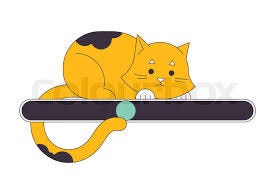
You walk into a new cafe, look around, but you don't like the vibe, and you leave immediately. Has this happened to you?
In marketing speak - you bounced - that is, left without buying or even asking a question.
If 100 people visit your website and 50 leave after just seeing the landing page, your bounce rate is 50%.
There are many metrics in website analytics, but I find bounce rate the most fascinating. A high bounce rate may not always be bad news. For example, a high bounce rate on a customer help page may indicate that the user found the solution to their issue and bounced happily.
But most of the time, a high bounce rate is bad news because it may mean:
The visitor did not find what they expected
The page was slow to load or hard to navigate
In particular, a high bounce rate of paid traffic means the money is going down the drain.
When users abandon a page without interacting, what psychology is at play?
A website must evoke a positive emotion, especially a feeling of trust, within the first few seconds; otherwise, users are likely to leave.
The human brain hates being overwhelmed. Users are likely to leave if a website is crammed with information, pop-ups, or complex navigation.
Expectations of the user play an important role - for example, these days, users expect a website to load in a second.
The aesthetics of a website are crucial in striking an emotional chord in the following ways -
Harmonious color palettes, such as those on Spotify, can evoke emotions of trust and excitement
Engaging Imagery such as that of Persepolis is a potent tool to reflect authenticity.
Micro-interactions such as What is Missing are subtle design elements that can enhance user engagement.
Even a simple animation, such as a playful loading bar, can help with user engagement.
A bounce rate is a simple metric that can lead us to deeper questions that can help us improve the UX and, ultimately, sales and revenue. Read more about it here: https://cxl.com/guides/bounce-rate/
https://www.corporate-eye.com/main/bounce-rate-psychology/
That’s it for this week. See you next week.


